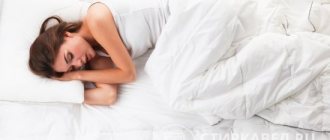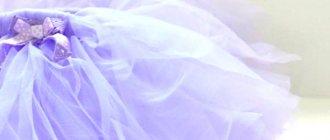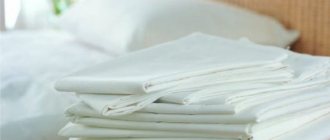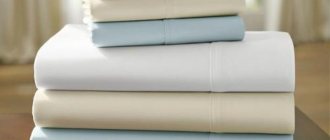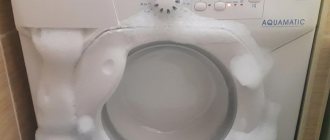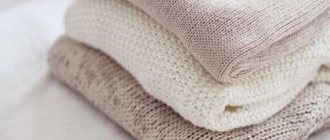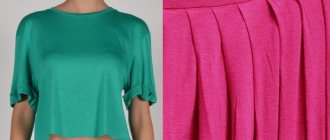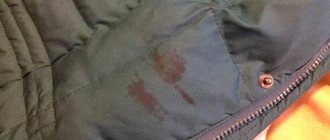Bed linen should always be kept clean. This is the only way to ensure quality and healthy sleep for yourself and all family members.
It would seem that washing bed linen is devoid of any tricks. In fact, there are many small but useful secrets that help not only keep your bed fresh, but also significantly increase the service life of sheets, pillowcases and duvet covers.
Read the article about how to properly wash, dry and iron bed linen made from different types of fabric in an automatic washing machine (at how many degrees, in what program) and manually.
Preparation for the process
Preparing bed linen for washing is a mandatory condition that should not be neglected.
Basic recommendations:
Go through your laundry, sorting it by color and fabric type. White, light, colored and black items are washed separately.- Separate the laundry into sets if they have different colors.
- Study the manufacturer's information on the label.
- Shake the product several times to remove dust.
- Turn pillowcases, duvet covers and mattress covers inside out. Remove dirt that has accumulated in the corners.
If there are difficult stains on the fabric, for example from blood or wine, they need to be washed in advance.
Choosing the right detergent for quality washing
Based on what parameters do most of us choose a detergent? Usually they look for it to be for white, colored or children's products. It is difficult to sort through the many brands and choose the most effective and without harm to health. Let's see what influences his choice.
Important! You cannot use hand washing detergents for your washing machine.
How to wash in an automatic washing machine?
Machine washing of bed linen is carried out according to the following instructions:
- Load the items into the drum of the washing machine.
- Select the appropriate washing mode.
- Set the spin speed and water temperature.
- Add or add detergent.
- Turn on the “Extra Rinse” function. It is used when washing with granular powders or with a large load.
- Start the wash cycle. After its completion, the laundry is removed from the drum and sent to dry.
Many modern cars are equipped with the EcoTime function. It can be used if there is one set of bed linen in the drum.
In what mode, at what temperature?
When choosing a washing mode, you need to start from the type of fabric from which the laundry is made. Modern machines are equipped with many useful functions, so you can choose the best way to care for your bedding.
Basic recommendations:
“Silk” mode is suitable for washing satin, silk and wool;- delicate or gentle washing is intended for the care of synthetic fabrics, jacquard and chintz items;
- the “cotton” mode is suitable for washing natural fabrics (cotton and linen);
- washing with pre-soaking is required for heavily soiled laundry;
- The “Quick Wash” mode involves processing items for 15 minutes; it is chosen when the laundry is clean, but needs to be refreshed.
In most cases, you can limit yourself to a maximum washing temperature of 60 degrees.
Modern detergents allow you to remove dirt even in cool water. If it is not hotter than 40 degrees, the fabric retains its density and color saturation longer.
Temperature recommendations:
- for linen and cotton: 60 degrees;
- for synthetics: 40 degrees;
- for delicate fabrics: 30 degrees;
- for colored fabrics: 40 degrees.
White bed linen can be washed in hot water, but only if it is made of cotton or linen.
Detergent
The choice of detergent depends on a number of factors:
Color. If the products are painted, you need to choose a powder labeled Color.- Compound. Aggressive detergents containing chlorine are not suitable for machine washing.
- Bleach. Its presence in the composition is acceptable provided that white laundry is to be washed.
- Release form . Liquid detergents and gel capsules can be rinsed well and dissolved in cool water.
To ensure that the laundry has a pleasant aroma, does not electrify and retains color saturation longer, you can add fabric conditioner to the washing machine.
Spin
Spinning at high speeds is acceptable when washing durable fabrics (cotton, linen) . If the product is made of delicate fabric, then it is reduced to 400-600 rpm.
Delicate fabrics require avoiding automatic drying, or reducing the spin speed to minimum values.
How to wash heavily soiled laundry?
It happens that over time the bed becomes gray or yellow, stains appear on it that are almost impossible to remove.
There are products that help wash washed bed linen, for example, Domestos and Belizna bleaches. It is necessary to soak the bedding set in water using the selected product in accordance with the instructions indicated on the package.
There are also traditional methods of dealing with yellowness and spots:
- Ammonia. A few drops should be added to very warm water when soaking. After half an hour, gently wring out the fabric and put it in the washing machine.
- Boric acid. 2 tbsp. l. must be dissolved in 3 liters of water. Soak for 40-50 minutes, then wash.
- Hydrogen peroxide. 1 tbsp. need to be diluted in 3 liters of water, left for 30-40 minutes.
- Yellow stains can be washed off with laundry soap or Antipyatin. First, you should gently rub the dirt with it, then soak the item in a soapy solution for 3-4 hours.
How to properly wash by hand?
You can wash your bed linen by hand. This requires some effort, but this method of processing is considered more gentle. Hand washing is especially important for caring for delicate fabrics.
Step-by-step algorithm of actions:
- Fill a large basin or bathtub with warm water.
- Dissolve detergent in it. You need to choose either a universal liquid composition or a powder intended for hand washing. The packaging of detergent should have an icon in the form of a basin with a hand placed in it.
Soak bedding in water.
The time it is kept in the washing solution depends on the degree of contamination of the fabric. General recommendations: for white items – 1-3 hours, for colored fabrics – no more than 60 minutes.- Remove difficult stains. If the material allows, you can use a brush with soft bristles.
- Using gentle squeezing movements, stretch the entire surface of sheets, pillowcases and duvet covers step by step.
- Rinse things in warm water. To make them soft, you can add fabric softener.
- Wring things out and send them to dry.
It is necessary to rinse the laundry until the water stops foaming, since the detergent particles remaining in the fabric fibers will slowly destroy them. In addition, with constant contact with the skin, they can provoke the development of allergies.
Choice of product
To ensure that your bed linen becomes clean after washing and does not lose its color and structure, you should know a few tips:
- For natural fabric, a powder that does not foam much is well suited.
- If the water in your area is hard, you should use a water softener. It will not only protect the machine from scale, but will also preserve the properties of the fabric. In this case, it is necessary to use more of the main product than when washing in soft water.
- It is worth washing things of people with allergies using liquid products rather than powders. The same applies to dark fabrics.
- There is no need to exceed the dosage of detergent; use exactly as much as indicated in the instructions.
- You cannot wash with expired products. The chemicals they contain become toxic to people, especially children.
How often?
Bedding should be washed as it gets dirty. Even if no noticeable stains appear on the fabric, it is recommended to change it every 7 days . In a week, the material does not have time to become salty, but it is difficult to call it fresh.
Linen absorbs sweat and other secretions and acquires an unpleasant odor. Therefore, you need to wash it at least once every 7-10 days. If a person sweats a lot, then this procedure should be performed more often.
Clean linen is the key to healthy sleep. Such bedding does not spread dust mites or allergens. Read more here.
Made from poplin
Caring for poplin is not difficult at all. Poplin is recommended to be machine washed at 30-40°C. It does not stretch and retains its shape and color perfectly even after a large number of washes. This fabric does not need to be ironed as it has low creaseability.
Poplin bed linen has recently become especially popular. When choosing fabric for bed linen, people most often pay attention to such characteristics as its wear resistance, ease of care, and the naturalness of the fabric. Poplin is easy to wash at low temperatures. There is no need to iron it after washing - it smooths itself out after the bed is made with it, and then retains its neat appearance and freshness for a long time.
Poplin is often used to make bedding for little ones. The naturalness and softness of the fabric is very important for children, and poplin meets all these requirements. This type of linen can be used all year round - it allows air to pass through in the summer and retains heat in the winter. The fabric is very pleasant to the body, its softness ensures a sound, comfortable sleep. The colors of poplin are varied - it can be a noble check, a cheerful stripe, a beautiful delicate printed pattern, or a classic white color.
Features for products made from different materials
Depending on the type of fabric from which the set is sewn, the rules for caring for it will differ . There are picky materials that are not afraid of even boiling, but there are also expensive bedding that requires a delicate attitude.
Cotton
This is the most popular material for sewing pillowcases and sheets. It absorbs moisture well and is not afraid of automatic washing. In extreme cases, cotton underwear can be boiled.
When washed in water exceeding 60-70 degrees, bedding may shrink.
You can use bleaching agents for washing . Spin at maximum speeds is allowed. Linen has similar properties.
Synthetics
Synthetic fibers are included in most bedding sets. However, for a comfortable sleep, sheets and pillowcases with a high content of them are not very suitable, since they do not allow moisture and air to pass through well.
Features of washing such products:
- water temperature – up to 40 degrees;
- spin at a speed no higher than 600 rpm;
- detergent without aggressive components in the composition.
The more intense the impact on synthetic fabrics, the faster they deteriorate.
Blended fabrics
Blended fabrics are a combination of natural and synthetic fibers. Their content in a particular bedding set will vary. Therefore, before you start washing, you need to read the manufacturer's recommendations.
Basic care tips:
- Hand and machine washable.
- Avoid using chlorine bleaches.
- The water temperature is not higher than 40 degrees.
- Spin at speeds up to 500 rpm.
With proper care, high-quality PBC made from mixed fabrics will last up to 5 years.
Satin
Satin linen is very pleasant to the touch, so sleeping on it is a pleasure.
Caring for it must meet the following requirements:
- colored satin is washed at 40 degrees;
- white satin is washed at 60 degrees - this is the maximum temperature;
- spinning can be carried out at maximum speed.
For satin, machine and hand wash are acceptable. Read more about the rules for washing satin bed linen here.
Bamboo
Bamboo bed linen can be washed by hand or machine. Caring for it does not present any difficulties.
Rules to follow:
- Do not exceed the water temperature of 40 degrees.
- Do not use aggressive detergents.
- Do not push at maximum speeds.
It is recommended to opt for the “delicate wash” mode.
Silk
Silk underwear is expensive and requires careful handling. That is why all machines have a separate item in the “silk” mode.
Washing is carried out taking into account the following features:
- water temperature – no higher than 30 degrees;
- detergents - only liquid;
- spinning is not allowed.
To prevent silk sheets from becoming electrified and shiny, it is recommended to use an antistatic agent for bed linen. It is included in most air conditioners (Laska, Ushasty Nyan, Synergetic, etc.).
Percale
Percale consists of cotton and other fabrics (polyester, linen or silk). The threads are woven quite tightly, which allows you to wash such bed linen in a machine.
Basic recommendations:
- The water temperature during the first wash is no higher than 30 degrees. In the future, percale can be washed at 60 degrees.
- Use of neutral liquid detergents, without bleaching components in the composition.
- Spin speed is up to 800 per minute.
With proper care, percale bedding can withstand more than 1,000 washes.
Jacquard
Jacquard bed linen looks attractive and is very pleasant to the touch. Such sets are rightfully considered a luxury item.
Basic care recommendations:
- Hand and machine washable;
- water temperature – no higher than 30 degrees;
- Spin is disabled.
You can iron jacquard linen only from the wrong side.
Velvet
Velvet bed linen is very demanding to care for. This is a delicate and noble material, which has been and remains a symbol of high status and high cost.
Basic cleaning recommendations:
- Hand wash only.
- Avoid granular powder, bleaches and conditioners.
- Prohibition on any type of spin.
Do not rub velvet with a brush. You can use a sponge to remove dirt.
Selecting temperature and mode depending on the type of fabric
All modern washing machines have basic and additional modes. Which one to choose depends on the type of fabric and degree of contamination.
The washing temperature depends on how dirty the laundry is. The more spots, the hotter the water. However, linens with patterns may fade when the temperature rises.
Cotton fabrics
Cotton and linen are the most unpretentious and affordable fabrics. We can say that a bed made of these materials is the most comfortable and practical, because it is beautiful, pleasant to the touch, practical and inexpensive.
Many modern models of automatic machines have a “Cotton” mode. We set the spin speed to 1200 rpm.
The temperature for washing cotton and linen fabrics without a pattern is 60°C, colored fabrics are 40-50°C. Heavily soiled bed linen can be washed at 90 degrees.
Cotton baby bedding should be washed at temperatures above 60°C to ensure it cleans better.
Linen and cotton dry quickly; they are not picky in this matter. However, you should not leave a set with a pattern in the sun, as it may fade.
Blended fabrics with added synthetics
You need to wash clothes made from fabrics with a combined composition carefully, since such materials are quite capricious, can shrink or become very deformed, and the pattern on such sets is erased quickly. Synthetics are not as convenient and healthy, but they are cheap, which is why they are popular. It is also resistant to aggressive influences and chemicals. There are several types of mixed fabrics:
- Polycotton is a mixture of polyester and cotton threads.
- Poplin is a combination of cotton and chemical fibers.
- Microfiber – 100% polyester.
- Percale is a mixture of 50% cotton and 50% polyester.
- Viscose is a cellulose-based fabric.
Washing clothes made from such materials should be done at low temperatures – no higher than 40°C. The “Synthetic” or “Delicate Wash” modes will provide the necessary care for synthetic sets.
Before washing bedding made from mixed fabrics, it is necessary to soak it. But you shouldn’t rub, because under the influence of external forces, pellets appear, which not only spoil the appearance, but are also unpleasant for the body.
Satin
Satin is a type of cotton fabric. This material has high density and strength, quality, and remains in good condition even after a couple of hundred washes.
You should not use bleach, especially when washing colored fabrics - this leads to fading of the design and rapid abrasion.
Satin bed linen should be washed at a temperature of no more than 40°C, and for heavily soiled items – at 60°C. You should use the “Delicate Wash” mode with a spin speed of less than 600.
Satin is a slightly wrinkled material, but it needs to be ironed to remove remaining germs and bacteria.
Attention! After washing, satin may shrink slightly, but manufacturers usually make bedding sets with this in mind.
Bamboo
Recently, bamboo beds have become especially common. The advantages of this material are that it is very soft, but durable, and has antibacterial properties that last for a long time.
If possible, wash bamboo clothes by hand at low temperatures. In this case, you should use gels that have a gentle effect.
Bamboo can also be washed in a machine, but at a temperature not exceeding 30°C, in the “Delicate Wash” mode. The spin must be set to minimum or even dispensed with.
Bamboo fabric should be dried on a horizontal surface so that it does not become deformed.
Silk
Silk is an expensive, luxury fabric. However, the properties justify the price: it is soft, durable, pleasant to the touch, and has a noble shine.
Silk bed linen must be washed at a temperature of 30°C, no higher. This is due to the fact that silk sheds quite a lot, and hot water will only speed up the process. You should select the “Delicate Wash” or “Hand Wash” mode. Spinning, twisting, rubbing and other manipulations with laundry can damage it. It is better to rinse the material in warm or cool water and dry it away from heating appliances. No soaking required. But you still need to iron the silk, but at a minimum temperature, without steaming.
Children's sets
Features of caring for children's bedding:
- The kit must be washed before first use.
- Detergents should not contain aggressive components, including bleaches.
- Washing should be done regularly as sheets and pillowcases become dirty.
- It is recommended to load children's bedding separately from adult sets.
- Use natural cleaning products to remove stubborn stains.
The best bedding for a crib: satin, chintz, calico, linen, bamboo.
It is recommended to wash children's bedding with powder marked “Kids”. The composition of such products has a reduced level of surfactants and does not contain aggressive components.
Made from linen
The recommended temperature for linen products is 60 degrees. For white, universal powders are used; for colors, delicate detergents for delicate fabrics are used. Check the composition - options without bleaches are suitable. To improve the properties of linen fabric, it is impregnated with starch, fats, cellulose ethers, synthetic resins and other substances. Impregnation makes linen more resistant to shrinkage and deformation and wrinkles less. The recommended temperature is 40 degrees.
To make linen wash better, it is soaped and left in warm water for one hour. Then pour the powder and a tablespoon of vinegar into the water. Wash, rinse in cold water and dry. Soaked flax should not be dried on radiators or in special dryers - it may shrink. Iron, moistening the fabric. It is easier to iron under-dried items.
Do new ones need to be washed?
New bed linen must be washed. Before reaching the buyer, the fabric can gather dust for a long time in a warehouse, after which it is touched by many hands: weavers, packers, seamstresses, sellers. As a result, a certain amount of dust settles on it.
The first wash allows you to get rid of various contaminants and excess dyes, as well as make the material softer . The water temperature should be low, and detergents are sometimes completely abandoned.
Read more here.
How to wash faded clothes?
Unfortunately, many fabrics, especially bright ones, can fade a lot. To check whether a material has this property, you need to run a damp cloth over it and see if a colored mark remains on it.
To prevent things from shedding, you can soak them for 50-60 minutes in a solution of vinegar (1 tsp per 1 l), salt (1 tbsp per 1 l) or ammonia (5 drops per 1 l) in water . Afterwards, you need to thoroughly rinse the kit and put it into the automatic machine.
You can wash stained laundry using bleach for colored items (marked “Color”). In this case, the temperature should be set below 40°C.
Removing difficult stains
To combat difficult stains, it is not necessary to use aggressive detergents. Available and inexpensive substances that everyone has in their home come to the rescue:
Blood. It can be removed using hydrogen peroxide, which is applied to a cotton pad and wiped with it until the stain disappears completely.- Urine, sweat and other secretions .
Baking soda and vinegar work well with such stains. They are applied one by one to the fabric, wait until the foaming reaction ends, leave for 30 minutes and wash as usual. - Oily spots . They can be easily removed using a mixture of salt and starch. The powder is applied to the stain, left for an hour, and then washed.
- Cosmetics stains . The most accessible means for removing them is laundry soap. It is grated, diluted with water and applied to the stain as a paste. After 30 minutes the item needs to be washed.
- Wine, coffee, tea . You can neutralize the coloring pigment with ammonia. It is applied to a cotton pad, which is used to wipe the stain until it disappears completely.
What to do if the bed smells unpleasant after washing?
An unpleasant smell from clothes after washing can appear for several reasons:
- Irregular ventilation of the drum.
- Using the wrong powder.
- Excessive use of cleaning solutions.
- Leaving dirty or wet clothes in the drum for a long time.
- Lack of proper care of the washing machine.
- Incorrect connection of the hose to the sewer.
You can combat this in the following ways:
- Troubleshooting automatic machine operation. To do this, it is better to call qualified craftsmen; you should not carry out repairs yourself, as this can only worsen the situation.
- If there is mold on the drum, you should treat it with a solution of copper sulfate and leave it for a day.
- You can wash your laundry from the “aroma” of dampness using 150 g of citric acid and 100 g of soda poured into the machine. To do this, you need to set the longest mode and temperature to 90°C.
- A small amount of vinegar also works great for removing musty odors.
Drying
Recommendations for drying bed linen:
- Products should be hung in such a way that they are as straight as possible;
- the room must be well ventilated;
- Do not dry the bed on heating devices or near sources of open fire;
- It is not recommended to dry the bed in the sun, as ultraviolet radiation contributes to the destruction of fabric fibers.
Delicate materials, such as silk, velvet or jacquard, should be dried on a flat, horizontal surface.
Made of velvet
Washing machine is contraindicated for velvet. However, such underwear is rare - it is for “gourmets”. The velvet is not rubbed or twisted, and is handled as gently as possible. Temperature - up to 30 degrees. Instead of powder - gel. You can't squeeze it. Dry, spread out on the table, on a large towel. Roll it up and press down a little so that the water comes out. After changing the towel, repeat the process. Dry in a horizontal position or hang in the shade. When the velvet is dry, shake it so that the pile settles correctly.
Ironing
Iron bed linen depending on the type of fabric from which it is made. The manufacturer always indicates the relevant information on the product label.
If it is not there, then you need to iron the sheets and pillowcases at a minimum temperature . To do this, switch the toggle switch on the iron to an icon in the form of a single black dot.
You need to start the procedure while the laundry is still damp. They look at it from the wrong side. It is possible to use the steam function. Everything about ironing bed linen is here.
Bed linen for children - washing features
Children's bedding should be washed on the "Baby clothes" mode at 50 - 60°C.
Carefully choose baby powder - it should not contribute to allergies on the child’s delicate skin.
Stains often appear on children's underwear. It’s easy to get rid of them - soak the items rubbed with laundry soap before washing. And then feel free to go wash it.
Attention! Wash children's underwear separately!
Helpful information
Tips for washing bed linen:
- Do not overload the drum by more than 2/3. Otherwise, the quality of the wash will be worse.
- After the machine emits a signal indicating the end of the wash, the laundry must be removed immediately. The longer it remains in the drum, the more likely it is to shed.
- If a person is sick, it is recommended to change his bed linen every 1-2 days. When this is not possible, it is necessary to at least wash the pillowcase. Many viruses and bacteria settle on the fabric, which pose a threat of infection. Washing should be done at high temperatures.
You will find a lot of useful and important information about washing bedding in this section.
Loading
Each washer has its own capacity limit. Drum loading depends on the model. Compact machines are loaded with 3-4 kg, standard machines - 5-9 kg. The user’s task is to load the drum without exceeding the norm. This is the only way to ensure high-quality washing of products.
If your SMA does not have automatic weighing, you have to estimate your weight by eye or calculate it by checking the tables:
- Sheet - 0.4-0.5 kg;
- Duvet cover - 0.5-0.7 kg;
- Bedspread - 0.6-0.8 kg;
- Pillowcase - 0.15-0.25 kg.
When loading, you need to take into account the volume of things - they must rotate freely inside the machine, otherwise the quality of the wash decreases. It is recommended to fill the drum halfway - this way the products will be washed as carefully as possible. By filling the drum to capacity, you risk the beauty of your laundry.
Recommendations and tips
To get an excellent result, you need to know the rules and important nuances.
- Before washing, bedding must be turned inside out. Thanks to this action, you can get rid of dirt that accumulates in the corners of the product.
- Before washing delicate fabrics, stains should be treated with a stain remover. But linen or cotton products do not require such attention. You just need to adjust the washing mode.
- It is better to spin colored laundry at a speed of no more than 800. This way, creases do not form on the fabric. And the dye will remain in its place and will not wash out.
- A new bedding set must be washed. Fabrics are sometimes treated with an additional solution to make the fabric shiny when packaged. Therefore, you need to remove all unnecessary substances from the kit.
- It is better to wash baby clothes with baby soap. It practically does not cause allergies.
- The washing machine is loaded with bed linen no more than 2/3 of the total volume. It should move freely in the drum.
- When drying colored laundry, turn the item inside out. This way the color of the bed linen will not fade and will retain its original appearance.
- Bed linen should be ironed damp after washing. This will make the work much easier and require less effort and time.
- Clean the washing machine. To do this, start it empty, adding special tools.
Clean linen makes the apartment comfortable.
Clean linen is an indicator of the well-groomed and beautiful apartment. To ensure that it always remains so, certain rules must be followed. Perform washing based on the fabric of the product, the selected mode and program.
Remember the recommendations or review them every time you wash your clothes.
Use different products for adults and children to prevent allergies. Before purchasing products, you should carefully study their composition and also check the expiration date. Follow the recommendations and tips for using bedding. And it will last for many years.

